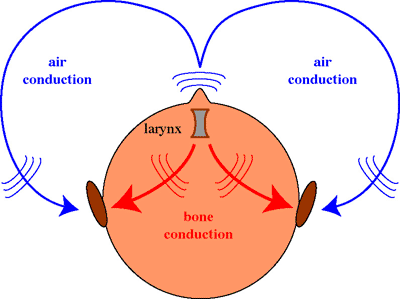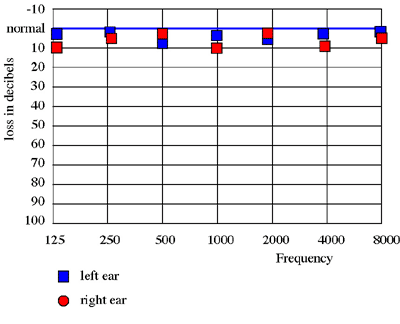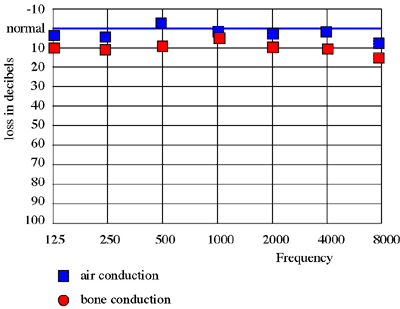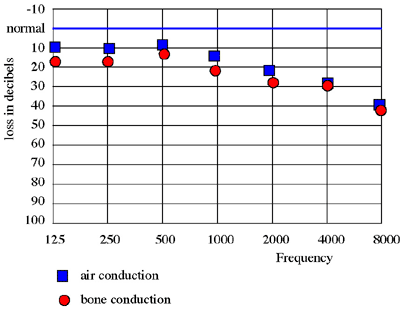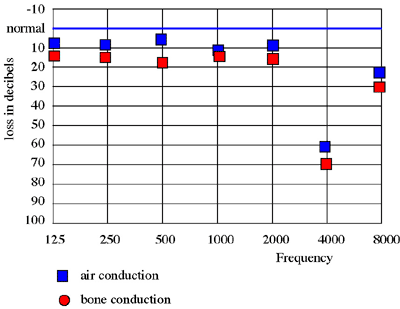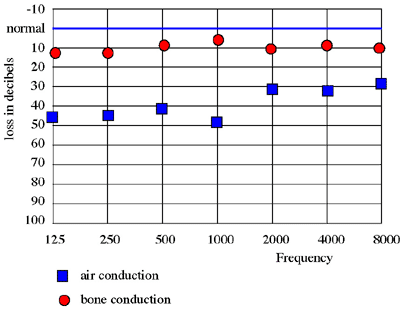A. Otosclerosis: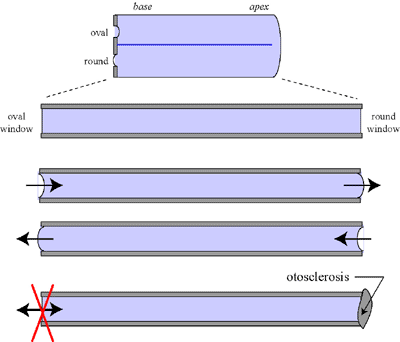
The inner ear can be described as a single tube which starts at the oval window and ends at the round window. This tube is filled with fluid. If the membrane of the oval window is pushed inwards, by a sound vibration, then the round window membrane, at the other end of the tube, is pushed outward. This is because fluid is not compressible.
The opposite happens when the oval membrane is pulled outwards, then the round membrane will be pulled inwards. During normal hearing, this push and pull will occur very quickly and the fluid will oscillate left and right (thereby creating vibrations in the basilar membrane; not shown in this diagram).
But if the round window is closed (by otosclerosis) and therefore fixed, then the fluid inside the tube cannot be pushed or pulled. Then it is no longer possible to push or pull the membrane of the oval window. And therefore, the fluid inside no longer vibrates and can no longer push & pull the basilar membrane and stimulate the organ of Corti.
Therapy: removal of the bone accumulation.
